North Korea’s Yongbyon Nuclear Scientific Research Center: Satellite Update
New commercial satellite imagery from North Korea’s Yongbyon Nuclear Scientific Research Center indicates the following: 1) Continuation of activities at the Radiochemical Laboratory (RCL) and Thermal (Steam) Plant to support this, but no clear evidence that spent fuel rods from the The 5 MWe reactor for the production of plutonium was transferred to stores nearby; 2) new activities on the experimental light water reactor (ELWR), likely related to maintenance / repair; 3) low observable activity in the uranium enrichment facility (UEP); 4) Continue water management efforts along the Kuryong River; and 5) Continuation of the construction of a new wing of a large laboratory building in the main area of the research and administrative headquarters.
Radiochemical laboratory
The coal-fired power station that supplies the RCL with steam has been in continuous operation since the beginning of March, although the cloud of smoke is slightly less on the latest satellite images. While steam is required to dissolve spent fuel, extract plutonium, recover uranium, and treat radioactive waste, there is no definitive evidence that spent fuel was transferred from the storage facility adjacent to the 5 MWe reactor. The generation of steam as well as the thermal infrared emissions detected are not sufficient on their own to finally determine whether a new reprocessing campaign is in progress or whether the activity is only related to the processing of radioactive waste from previous campaigns.
Figure 1. Coal power plant has remained in continuous operation.
Bildplejaden © CNES 2021, Distribution Airbus DS. For media options, please contact [email protected]
The ELWR
Pictures from May 22nd show that the top of the roof for the outer portal lift tower was on the ground next to the tower structure. Although the purpose of the removal cannot be certain, access has likely been given to the motorized winch that lifts fuel containers and heavy reactor equipment to the entrance port on the north side of the security building. This enables the transport of fresh and spent fuel elements in and out of the reactor building through a special air lock during refueling or maintenance work.
Construction work on the portal tower began in 2012 and was completed by March 2013. The roof covering was added some time after mid-November 2015, probably to protect the motorized winch and support rails from the elements. Since no refueling has been observed since the reactor building was completed, the motorized winch has likely been idle as its installation and maintenance may be required to ensure its operational readiness. Pictures of the portal tower scaffolding suggest that the unit was being taken from the construction site to a nearby maintenance facility for a major overhaul.
Figure 2. Roof removed over the portal tower at the ELWR.
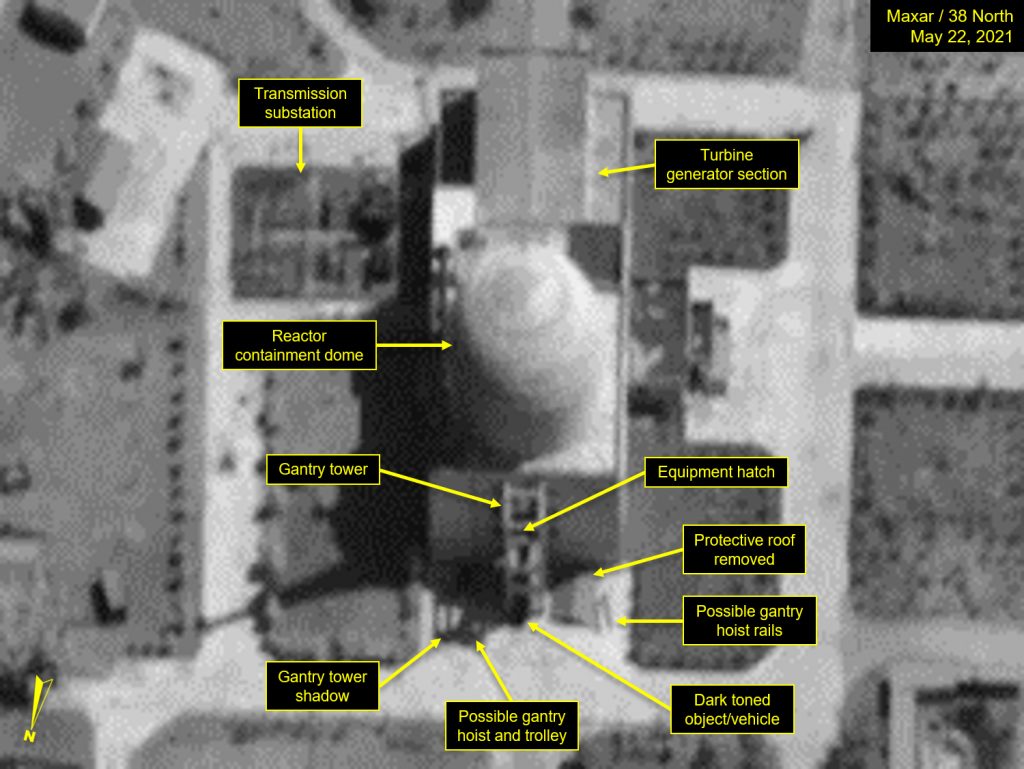 Satellite image © 2021 Maxar Technologies. All rights reserved. For media license options, please contact [email protected]
Satellite image © 2021 Maxar Technologies. All rights reserved. For media license options, please contact [email protected]
Figure 3. The ELWR plaster shows the portal tower and the equipment hatch with roof.
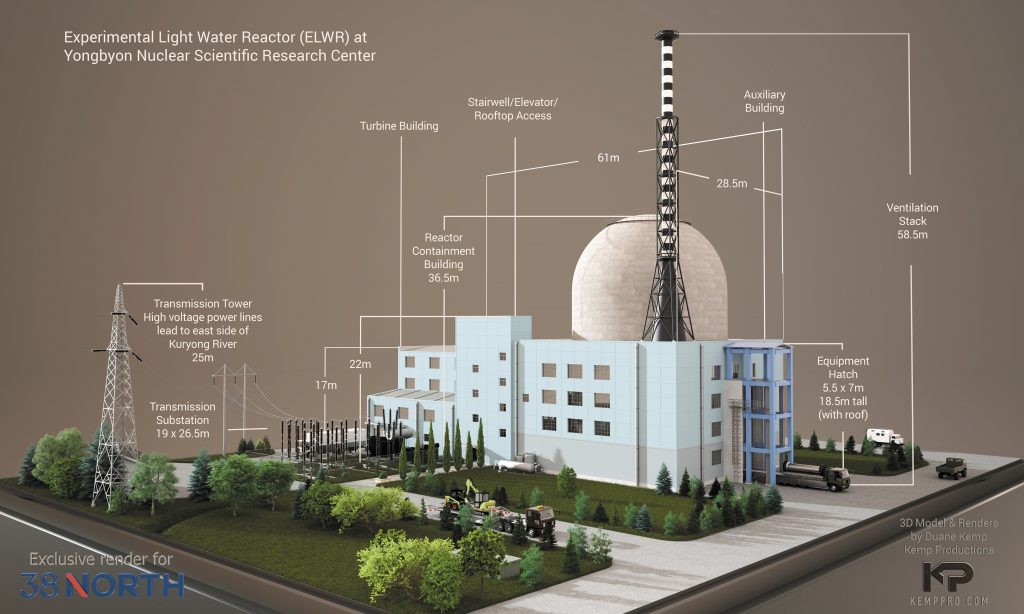 (38 North / Duane Kemp / Kemp Productions)
(38 North / Duane Kemp / Kemp Productions)
The UEP
Activity in the uranium enrichment facility was minimal. There were no noticeable changes to the cooling units next to the cascade hall. However, a tanker trailer was parked twice at the far western end of the hall.
The regular arrival of three specialized railcars at the UEP transfer station is another not fully understood event. On May 22nd, they reappeared at the city station, but had not yet reached the transfer terminal, which the UEP supports. Their past transit pattern suggests that they will arrive at UEP within a few days and stay about 10 days while an exchange will take place in the contents of the cars. It is not known whether they are supplying products or taking away products that have been used. These cars showed up three to four times a year and were last seen on January 19, 2021.
Figure 4. Specialized railcars observed at Yongbyon City Railway Station.
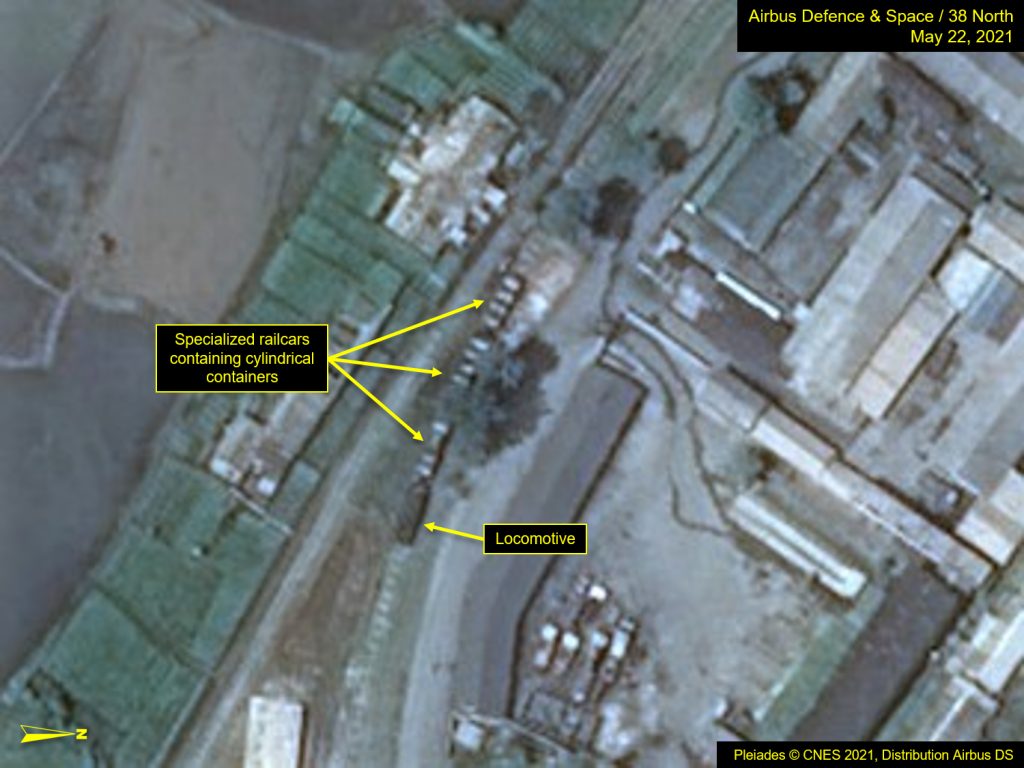 Bildplejaden © CNES 2021, Distribution Airbus DS. For media options, please contact [email protected]
Bildplejaden © CNES 2021, Distribution Airbus DS. For media options, please contact [email protected]
Other activity
The steam emissions from the UO2 production process building of the old fuel rod manufacturing plant on pictures from April 9th indicate that the plant is still in operation.
Canalization in the Kuryong River continues, as does work on the overflow dam next to the reactor area. The dam serves as a constant source of water for the ELWR and the 5 MWe reactor. Earthen infill is added along the length of the dam to repair damage from last year’s storms.
In the main area of the research and administration headquarters, a new wing is currently being added to one of the larger laboratory buildings. The gradual addition of new buildings or the expansion of other buildings shows the DPRK’s determination to continue its research and improve its skills in the Yongbyon Complex.
Figure 5. Steam emissions from the building of the UO2 production process.
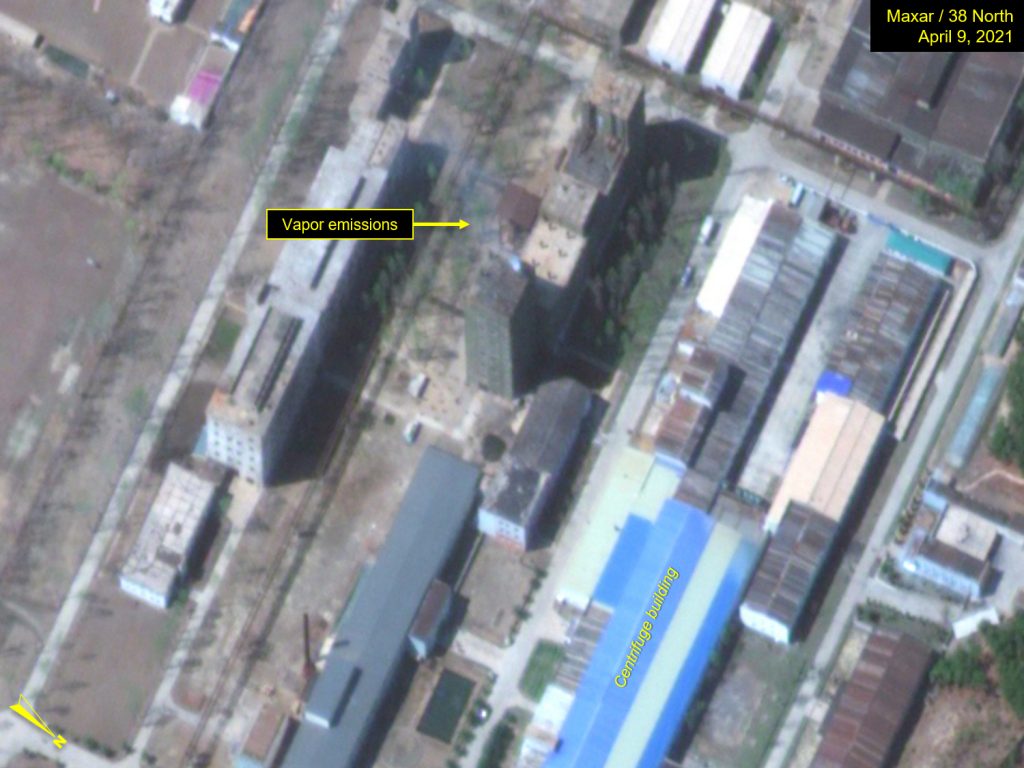 Satellite image © 2021 Maxar Technologies. All rights reserved. For media license options, please contact [email protected]
Satellite image © 2021 Maxar Technologies. All rights reserved. For media license options, please contact [email protected]
Figure 6. The Kuryong River canalization and work on the dam continues.
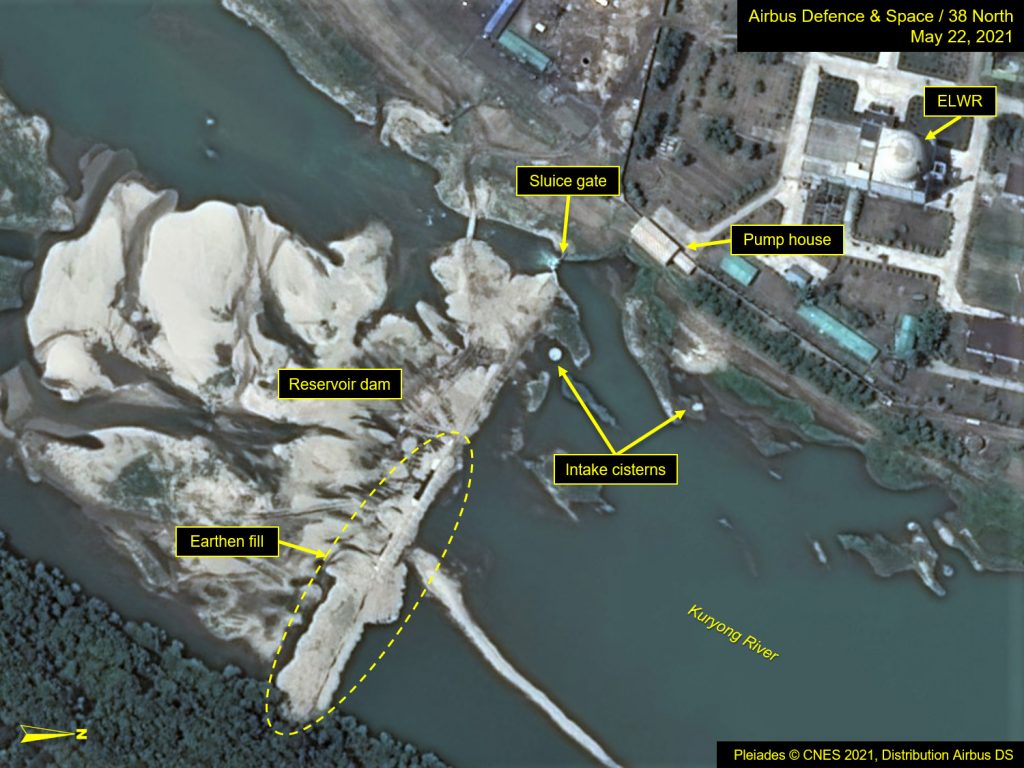 Bildplejaden © CNES 2021, Distribution Airbus DS. For media options, please contact [email protected]
Bildplejaden © CNES 2021, Distribution Airbus DS. For media options, please contact [email protected]
Figure 7. Further construction of the building at the headquarters for research and administration.
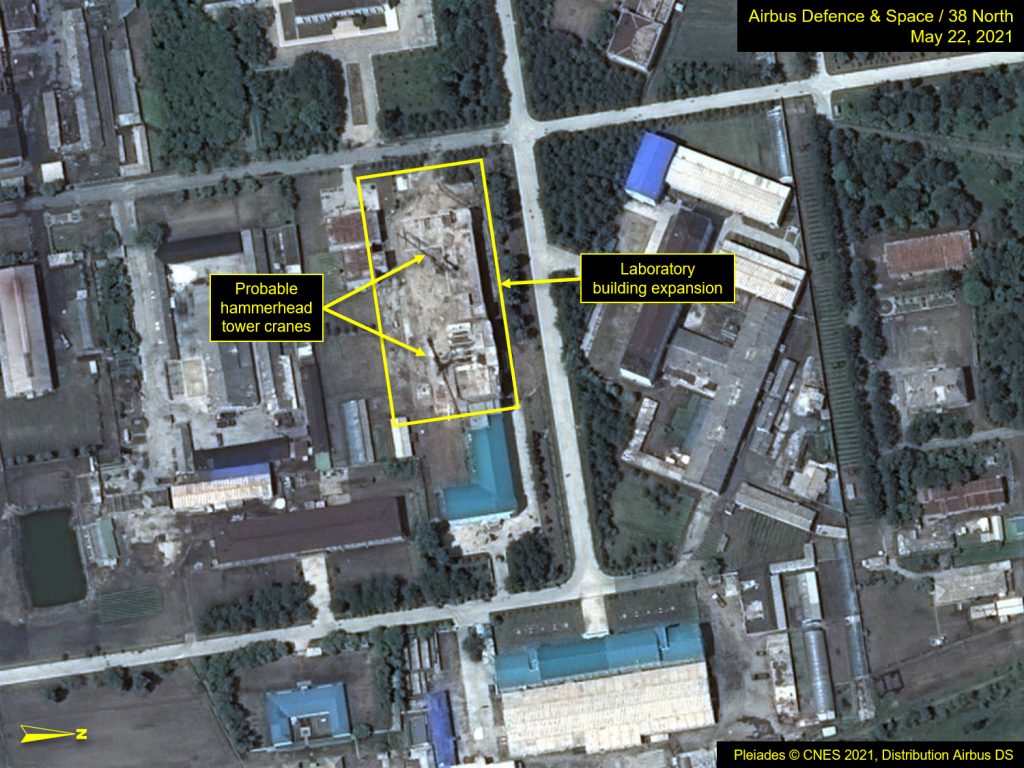 Bildplejaden © CNES 2021, Distribution Airbus DS. For media options, please contact [email protected]
Bildplejaden © CNES 2021, Distribution Airbus DS. For media options, please contact [email protected]


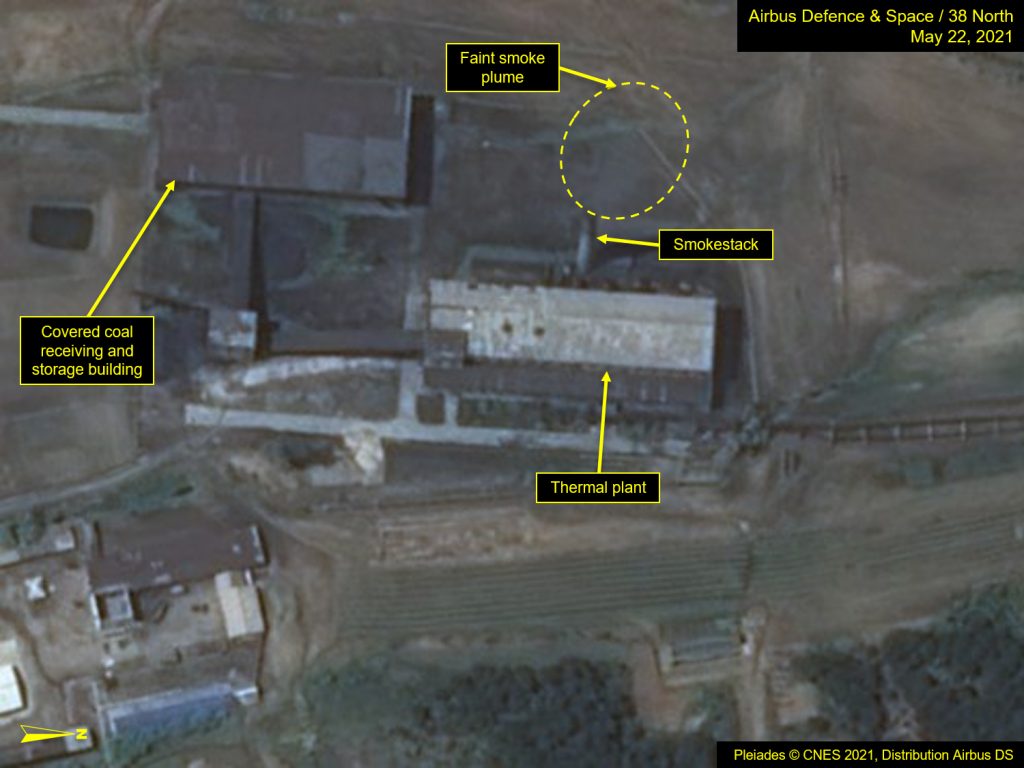
Comments are closed.